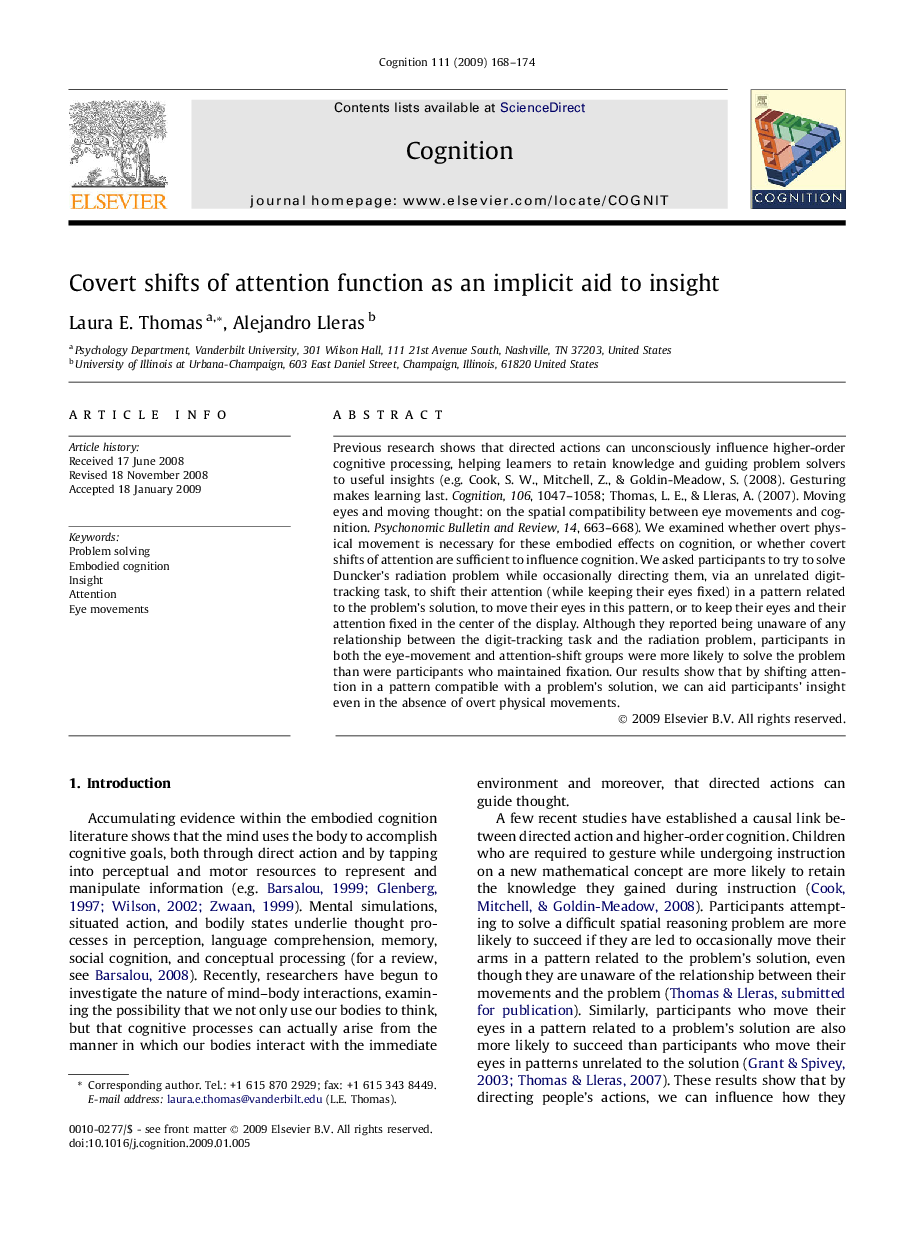| کد مقاله | کد نشریه | سال انتشار | مقاله انگلیسی | نسخه تمام متن |
|---|---|---|---|---|
| 927279 | 921961 | 2009 | 7 صفحه PDF | دانلود رایگان |

Previous research shows that directed actions can unconsciously influence higher-order cognitive processing, helping learners to retain knowledge and guiding problem solvers to useful insights (e.g. Cook, S. W., Mitchell, Z., & Goldin-Meadow, S. (2008). Gesturing makes learning last. Cognition, 106, 1047–1058; Thomas, L. E., & Lleras, A. (2007). Moving eyes and moving thought: on the spatial compatibility between eye movements and cognition. Psychonomic Bulletin and Review, 14, 663–668). We examined whether overt physical movement is necessary for these embodied effects on cognition, or whether covert shifts of attention are sufficient to influence cognition. We asked participants to try to solve Duncker’s radiation problem while occasionally directing them, via an unrelated digit-tracking task, to shift their attention (while keeping their eyes fixed) in a pattern related to the problem’s solution, to move their eyes in this pattern, or to keep their eyes and their attention fixed in the center of the display. Although they reported being unaware of any relationship between the digit-tracking task and the radiation problem, participants in both the eye-movement and attention-shift groups were more likely to solve the problem than were participants who maintained fixation. Our results show that by shifting attention in a pattern compatible with a problem’s solution, we can aid participants’ insight even in the absence of overt physical movements.
Journal: Cognition - Volume 111, Issue 2, May 2009, Pages 168–174